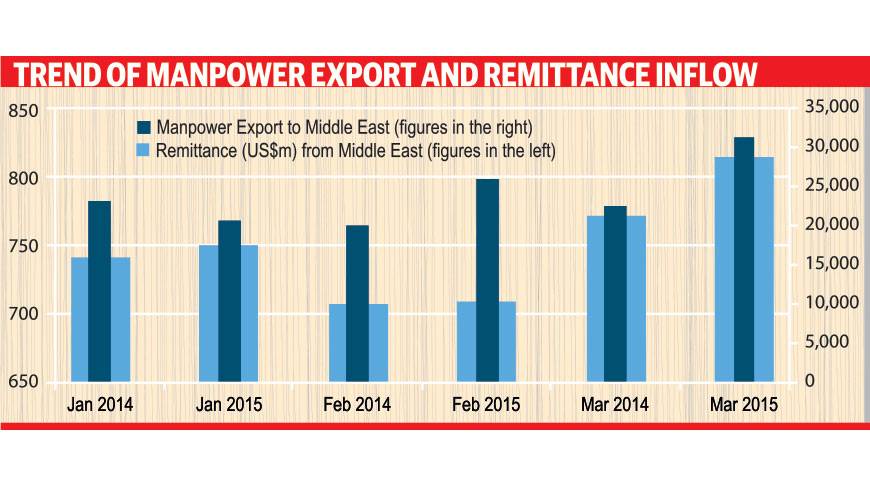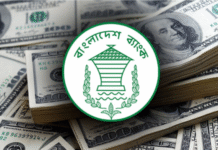Shedding the negative trend for more than a year, the remittance inflow to the country rebounded from the middle-eastern countries in the last nine months, thanks to the reopening of the manpower market for Bangladeshi workers in some of the Gulf nations after seven years.
The inflow of remittance rose by 7.6% in the first nine months of the current fiscal year where the country had experienced a fall of 13% in remittance earnings during the same period of the last fiscal year.
The country received remittance of US$6.68bn in July to March of the fiscal year 2014-15 from the gulf countries compared to $6.21bn in the same period of 2013-14, according to the Bangladesh Bank data.
The expatriates sent remittances worth $7.12bn in the first nine months of fiscal year 2012-13. After a long break, the Ministry of Labour of Saudi Arabia finally overturned the ban on the recruitment of Bangladeshi manpower in February, 2015.
The number of manpower export into the middle-eastern countries rose by 30% to 25,883 in February, just after lifting the restriction on Bangladeshi workers, compared to 19,928 in the same period of the last year.
The number of Bangladeshi workers to the middle-eastern countries is now gradually increasing with sending 31,443 migrants in March, an increase of 39% from 22,595 in the same month of the last year, according to the latest data of Bureau of Manpower, Employment and Training (BMET).
Remittance, the lifeblood for the country’s foreign exchange reserve, had slowed down for more than a year due to the ban on recruiting Bangladesh workers by Saudi Arabia, the largest manpower destination.
The manpower export witnessed a downward trend in January this year with posting 10% negative growth.
Despite the ban on the recruitment of Bangladeshi workers in the middle-eastern countries, the country witnessed an increasing remittance inflow trend from other developed nations soon after restoration of political stability in Bangladesh, said a senior executive of Bangladesh Bank.
As a result, World Bank had ranked Bangladesh 7th position in the list of remittance recipient countries in the year 2013, he said.
During the fiscal year 2013-14, remittance accounted for 66% of the foreign reserve while it was almost 9 times of the current account balance in the same fiscal year.
According to the Bangladesh Bank data, the country received highest remittance worth $814m in March from the middle-eastern countries in last seven months.
The figure was 15% higher from $708.71m in the previous month and 5% higher from the same month of the last year.
Earlier, country received $829m remittance in July from the gulf countries.
The country received $2.44bn remittances in between July to March in the fiscal year 2014-15 from the key remittance sourcing country Saudi Arabia, 5% rise from $2.32bn in the same period of the last year.
The number of manpower export in the Saudi Arabia rose by 389% to 3,731 in last two months, after lifting the restriction on recruitment from Bangladesh, compared to 763 in the same months of the last year. The remittance from other than middle-eastern countries increased by 6.67% to $4.57bn in the first nine months of the current fiscal year compared to $4.28bn in the same period of the last fiscal year.
The country received a total of $11.25bn remittance in the nine months of the fiscal year 2014-15, which was 7% higher from $10.49bn in the same period of 2013-14, according to the central bank data.
Source: Dhaka Tribune










